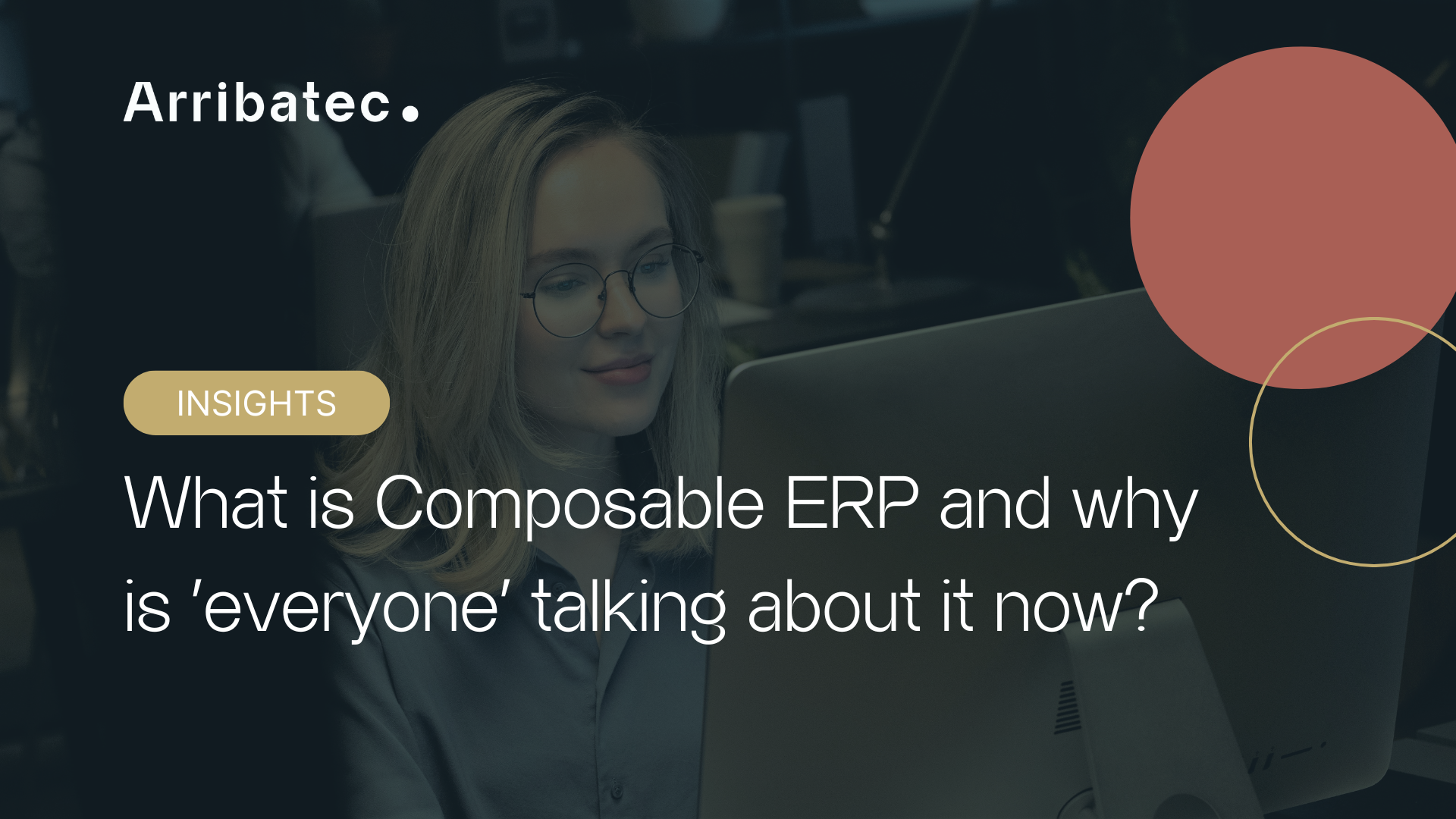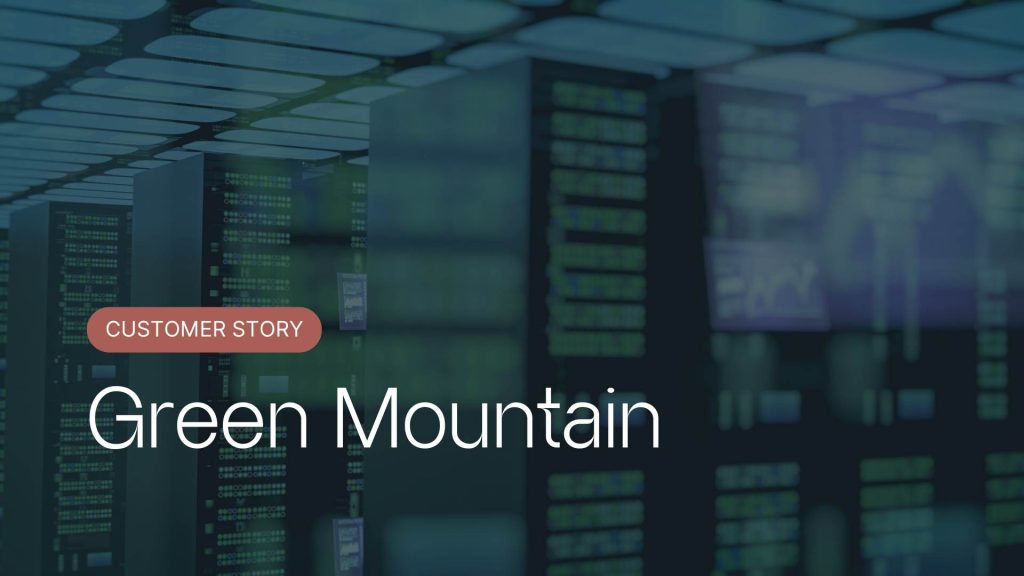
“Composable ERP,” one of the hottest buzzwords these days and a new way of thinking about business systems and IT strategy.
What is Composable ERP and why is “everyone” talking about it now?
Do you recognise this? The ERP project was delivered a couple of years ago, but already there are processes you’d like to adjust and functionality you’re missing. At the same time, you know it’s going to be expensive, time-consuming, and everything but pleasant. What if you could build your ERP system like a LEGO set, with flexible building blocks you can easily swap out when needs change? If that sounds exciting, let me introduce you to “Composable ERP,” one of the hottest buzzwords these days and a new way of thinking about business systems and IT strategy.
By: Jan-Arne Christensen
What is Composable ERP?
Imagine your ERP system as a LEGO set. Instead of one large block, it consists of many small building blocks that can be assembled, taken apart, and customised as needs change. That’s the core of composable ERP: a modular and flexible system built for change.
Gartner defines composable ERP as an adaptable technology strategy that allows the business to easily develop and customise its administrative and operational routines and processes in line with market changes and legal requirements. That means the business can choose, combine, and replace components without having to tear down the entire system.
In practice, this means you can compose (hence “composable”) your own ERP solution by assembling various modules and applications – from the same or different providers – that communicate through open APIs and integration layers.
For many of our customers, this means for example using Unit4 ERP as a core system, combined with solutions like Hypergene for performance management and reporting, Prophix One for budgeting, forecasting, and financial consolidation, Semine for automating invoice processes, and industry-specific applications connected through open integrations.
In manufacturing companies, we see the same principle with RamBase ERP as the core platform, extended with integrations to CRM, warehouse management, and quality systems
Why is composable ERP relevant now?
The short answer: Because change is the new normal.
Digitalisation, new business models, customer demands, and regulatory changes force businesses to be more responsive. IT systems must support quick adjustments without costing a fortune or taking 18 months to implement.
Previously, ERP was something you bought every ten years. Now it’s something you continuously develop. Needs change faster than before, and this requires systems designed for frequent adjustments.
In addition, we see a clear trend towards “best-of-breed” solutions, where businesses want to use the best tool for each purpose. Composable ERP enables such solutions in a holistic way, without falling into integration chaos.
Composable ERP vs. Traditional ERP
To understand what really separates composable ERP from traditional solutions, it’s useful to compare the differences side by side. The table below summarises the main contrasts in architecture, flexibility, and adaptability:
| Traditional ERP | Composable ERP |
|---|---|
| Monolithic architecture | Modular and API-driven |
| Hard to customise | Designed for change |
| Heavy on integration | Open to integrations |
| Large upgrades | Continuous improvements |
| Vendor lock-in | Possibility for best-of-breed |
A practical example is how modern ERP solutions, like Unit4 ERP, let you use microservices, extend functionality with low-code tools, and integrate with third-party solutions in a seamless way. You build with flexible blocks instead of carving the system in stone.
How does composable ERP work in practice?
In a composable ERP architecture, it’s APIs and modern middleware that make the magic possible. APIs ensure that various applications can exchange data and functionality in a secure and standardised way, while integration platforms (middleware) function as the glue that holds it all together. This gives the business flexibility to assemble and change the ERP landscape as needed, without having to alter the core system.
Let’s say you need to change the travel expense system because the company has grown internationally. With traditional ERP, you might need to adapt the entire finance module. With composable ERP, you simply plug in a specialised app without touching the rest of the system.
Another example: You want AI-based predictive analytics for inventory. In a composable ERP architecture, you can plug in a third-party platform and connect it to your inventory data.
Benefits of composable ERP
Composable ERP opens up a new way to work with business systems – more flexible, faster, and adapted to your reality. Here are some of the key advantages of a composable approach:
-
Flexibility: Adjust and expand the system in line with the business.
-
Faster innovation: Test new solutions without waiting for major releases.
-
Reduced risk: Changes can be made gradually and modularly.
-
Better user experience: Customise interface and functionality.
Challenges you need to be aware of:
-
Requires good governance and architecture strategy
-
Integrations must be planned and maintained
-
Increased need for technical and business competence
Is composable ERP right for you?
Here too, the classic consultant answer applies: “It depends.” Composable ERP is not about throwing out a well-functioning solution just to follow a trend, but about setting a strategy for how you want to develop your system landscape going forward.
Instead of thinking of ERP as a major technology project that happens every ten years, composable ERP gives you a framework for continuous development and adaptation. For many businesses, it starts with small steps: connecting new tools, opening up for better data integration, or streamlining and automating selected processes.
Over time, you build an architecture that makes it easier to adapt to new needs without being locked into one vendor or one platform.
And most importantly: Composable ERP is not just a technological approach. It’s a strategic way of thinking about business, processes, and IT. When the business works with continuous development as the norm, the systems must also be able to keep up.
Summary
Composable ERP is a step towards more flexible and business-aligned IT. By thinking modularly, building for change, and combining the best from several worlds, you get an ERP landscape that is robust, flexible, and adaptable.
FAQ: Frequently Asked Questions about Composable ERP
What does “composable” mean in composable ERP?
The term “composable” refers to the ability to assemble the system from various independent components or modules, which can be swapped or adapted as needed.
Is composable ERP only for large businesses?
No, even smaller businesses can benefit from a modular architecture. It’s more about the need for flexibility than size.
How does composable ERP affect costs?
It can result in lower long-term costs by avoiding large, expensive upgrades and only paying for what you need.
Does composable ERP require more IT competence?
Yes, it requires good understanding of architecture and integrations, but it also provides greater control and flexibility.
Is it safe to use multiple vendors in the same ERP system?
Yes, provided there is a strong integration framework and clear API standards.


